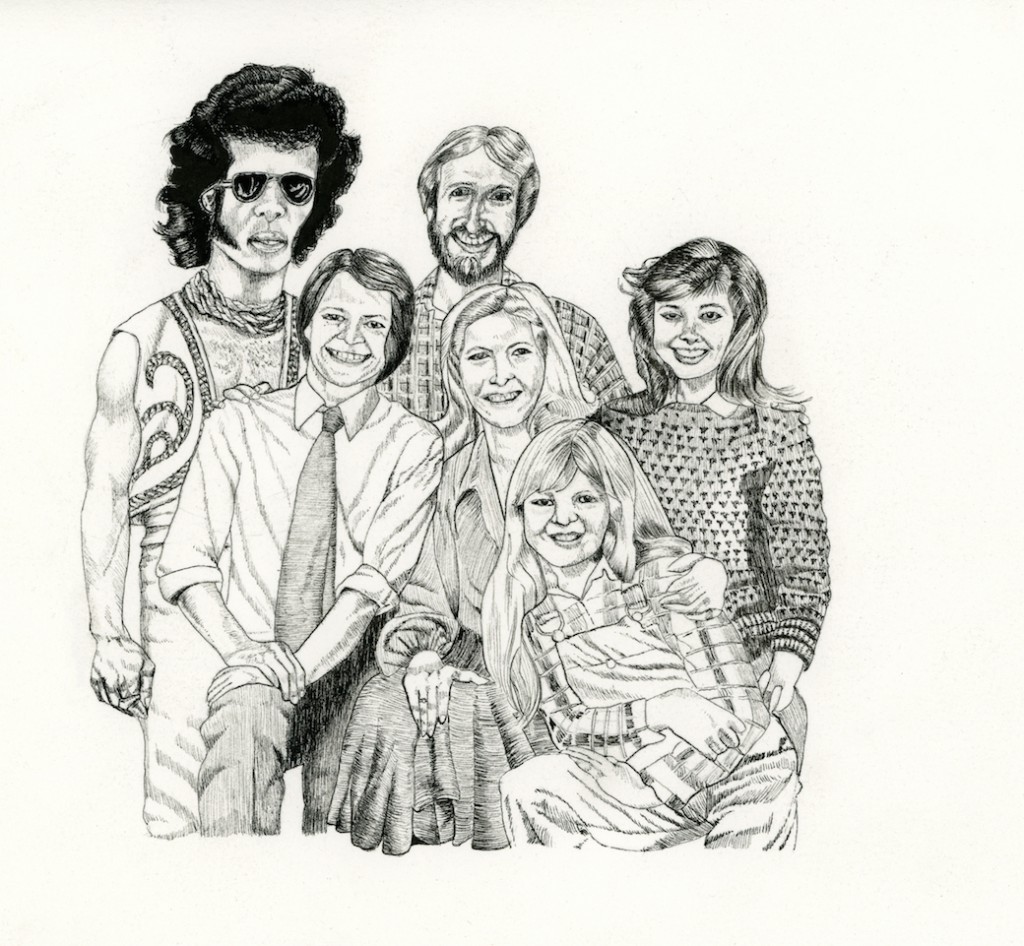
Ray Anthony Barrett. Sly and the Family Ties, 2015; ink on paper; 8 1/2 x 11 inches. Image courtesy of the artist. Special commission for ART21 Magazine (May/June 2015, “Family”).
One’s experience of family can be joyous, painful, bizarre, revelatory, and intimate. To describe it with any single word wouldn’t do it justice. Like a parade, it’s a cacophony of memories, celebrations, commemorations, dreams, and love. It’s a subject that everyone knows, at times a bit too well. For me, editing this “Family” issue of the ART21 Magazine was a challenge. Each contributor pushed me to think more deeply about familial ties, how we define family, how we form new kinds of families, and the ways families stay connected.
For this issue, I’ve gathered nine writers and artists from across the country to contribute essays, articles, interviews, and conversations that relate to the concept of family. We start with Roni Ginach, who applies psychoanalysis to questions about mirrored mother-daughter relationships. From there, Alexis Avedisian visits the islands of feminist Tumblr practices, where young women discuss affective emotional labor in online environments. Next, elsewhere on the Internet, Sara Schnadt and Kristy Baltezore consider emotional spaces in real life (IRL) and digital places (URL). Then, Casey Winkleman takes a trip through 1960s avant-garde New York and psychedelic Los Angeles, considering the connections between Fluxus and cult mentalities and practices.
The second half of this issue travels beyond the coastal hubs, landing in smaller American cities. The Portland-based Brannon Rockwell-Charland interviews the textile artist Bukola Koiki, whose work details the process of cultural reclamation, familial relations, and memory activated through ritual. In the Midwest (known as the Third Coast and No Coast to the artists who reside there), Danny Orendorff turns his focus toward the work of Rashawn Griffin, who returned to his hometown of Olathe, Kansas, from New York City in order to continue investigating questions about family narratives. Meanwhile, the Los Angeles–based, Tulsa-born Julie Niemi takes a trip back to her former hometown of Chicago, stumbling upon a fascinating conversation between two artists about “mothernism,” an evolving theory about the much-needed discussions of motherhood in the contemporary art world. To round out this issue, I contribute an essay that explores my relationships with Peregrine Honig and Arrington de Dionyso, two members of my chosen family.
How do we find people who form our families, now and into the future? This issue’s essays and interviews offer some answers, but the question remains open-ended, in a cycle of constant regeneration.
Welcome to our expressions and experiences of family.
Alicia Eler, guest editor



